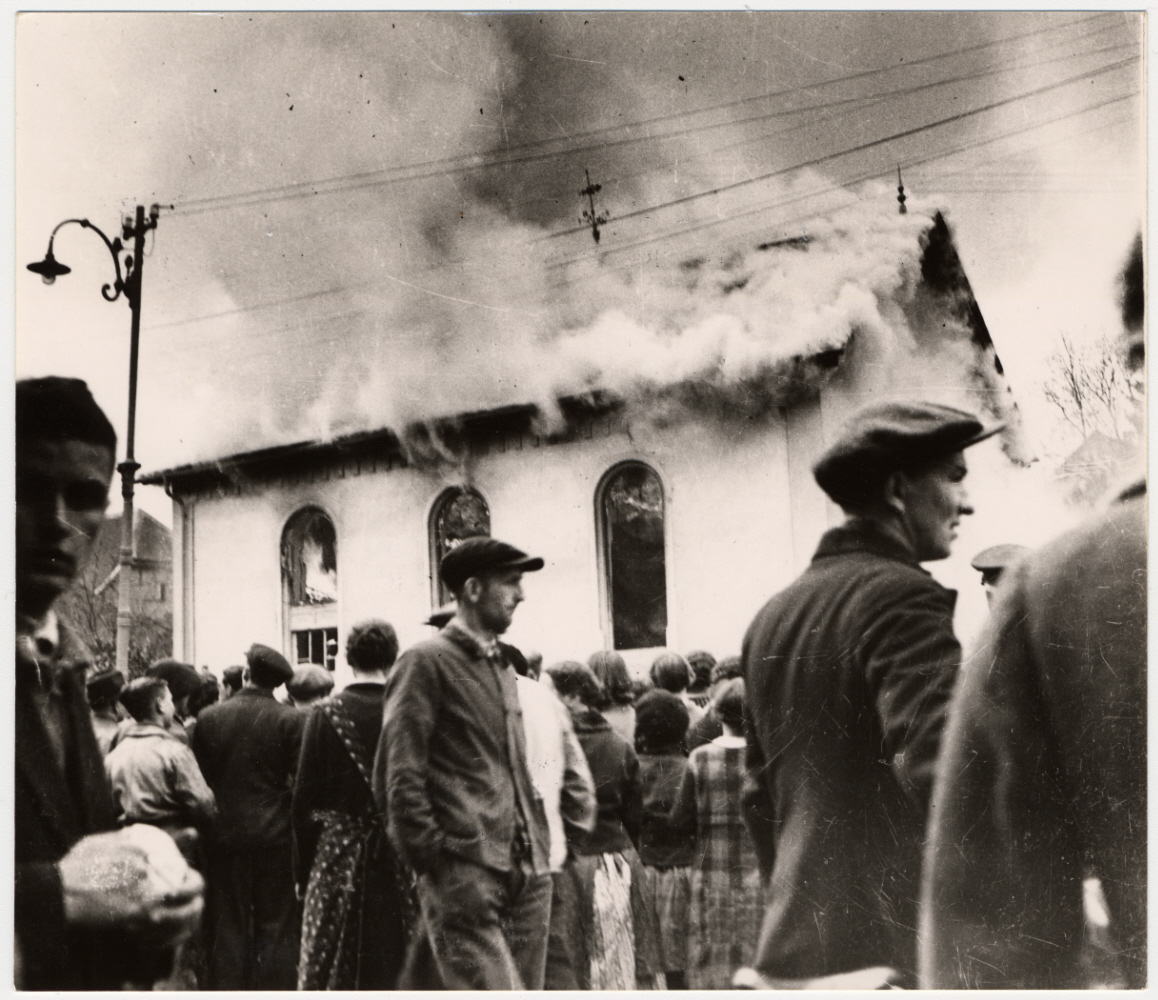
Anti-Jewish Riots Convulse German Reich (Kristallnacht)
In an organized act of nationwide violence, Nazis and collaborators burned synagogues, looted Jewish businesses, and killed dozens of Jewish people.
View newspaper articlesOn November 9-10, 1938, violence against Jews broke out across the Reich. It appeared to be unplanned, set off by Germans' anger over the assassination of Ernst vom Rath, a German embassy official in Paris at the hands of Herschel Grynszpan, a Jewish teenager. In fact, German propaganda minister Joseph Goebbels and other Nazis carefully organized the pogroms. Regional Party leaders issued instructions to their local offices, and during the following two days, Nazis and their collaborators burned over 250 synagogues, trashed and looted over 7,000 Jewish businesses, killed dozens of Jewish people, and looted Jewish cemeteries, hospitals, schools, and homes while police and fire brigades stood by.
As the violence spread, units of the SS and Gestapo arrested 30,000 German Jewish men and transferred most of them from local prisons to Dachau, Buchenwald, Sachsenhausen, and other concentration camps, where hundreds died from the brutal treatment they endured.
The German government pronounced that “the Jews” themselves were to blame for the pogrom and on November 12, 1938, imposed a punitive fine of one billion Reichsmark (some 400 million US dollars at 1938 rates) on the German Jewish community. The Reich government confiscated all insurance payouts to Jews whose businesses and homes were looted or destroyed, leaving the Jewish owners personally responsible for the cost of all repairs.
In the weeks that followed, the German government promulgated dozens of laws and decrees designed to deprive Jews of their property and of their means of livelihood even as the intensification of government persecution sought to force Jews from public life and out of the country. Indeed, the effects of Kristallnacht spurred mass emigration of Jews from Germany in the months that followed.
The pogroms became known as Kristallnacht, the "Night of Broken Glass," for the shattered glass from store windows that littered the streets.
Learn More about this Historical Event
- The “Night of Broken Glass” (The Holocaust: A Learning Site for Students)
- Kristallnacht: A Nationwide Pogrom, November 9-10, 1938 (Encyclopedia Article)
- Kristallnacht: The November 1938 Pogroms (Special Focus)
- Kristallnacht: How Did Religious Leaders in the US Respond?
- Kristallnacht 1938: As Experienced Then and Understood Now (Paper by Prof. Gerhard Weinberg)
Bibliography
Gilbert, Martin. Kristallnacht: Prelude to Destruction. New York: HarperCollins, 2006.
Pehle, Walter H., ed. November 1938: From "Reichskristallnacht" to Genocide. New York: Berg, 1991.
Read, Anthony. Kristallnacht: The Nazi Night of Terror. New York: Times Books, 1989.
Schwab, Gerald. The Day the Holocaust Began: The Odyssey of Herschel Grynszpan. New York: Praeger, 1990.
Search tips
These dates and keywords are associated with this historical event.